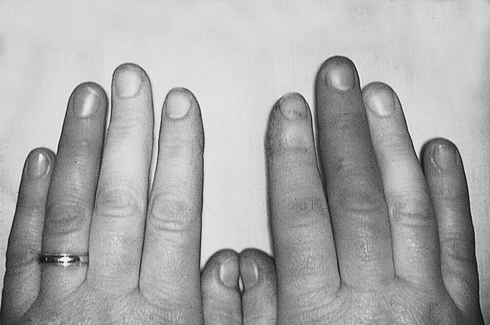Physical examination is often unrevealing in patients with RS unless they are examined in the midst of an episode, in which case discoloration of the fingers may be present as pallor or cyanosis. The discoloration may be asymmetric (Figure 1). Precipitating an episode by immersing the hand in cold water is inconsistent. An Allen test can show sluggish or mottled return of color to the hand. Livedo reticularis, or the appearance of a mottled or reticular pattern in the skin over the arms and legs, often in a circular pattern, may be seen during an episode of cold exposure in patients with primary RS. In the case of livedo reticularis occurring in primary RS, the findings reverse upon warming of the skin and do not lead to tissue loss or breakdown. Nonreversible livedo reticularis may be observed in other diseases, such as anti-phospholipid syndrome, vasculitis, and atheroembolic or thrombotic disease, Secondary Raynaud’s syndrome may be associated with collagen vascular diseases, hypothyroidism, hyperviscosity syndromes, and many other entities (Box 1). Among rheumatologic diseases, the incidence of RS varies, occurring in approximately 90% of patients with scleroderma and 30% of patients with systemic lupus erythematosus. In secondary RS, particularly with scleroderma and CREST syndrome, manifestations include severe pain, skin ulceration, and tissue infarction, most commonly seen as necrosis of fingertips. In contrast, these findings and tissue loss are rarely observed in primary RS. A positive serologic screen for rheumatologic conditions in an RS patient is highly predictive of the development of a collagen vascular disease. Evidence of arterial obstruction on vascular laboratory testing also predicts digital ulceration in these patients. Secondary RS as a result of other causes, such as hypercoagulable and hyperviscosity states, lead to tissue loss less commonly.
Diagnosis and Treatment of Upper Extremity Vasospastic Disease
Raynaud’s Syndrome
Primary Raynaud’s Syndrome
Secondary Raynaud’s Syndrome




